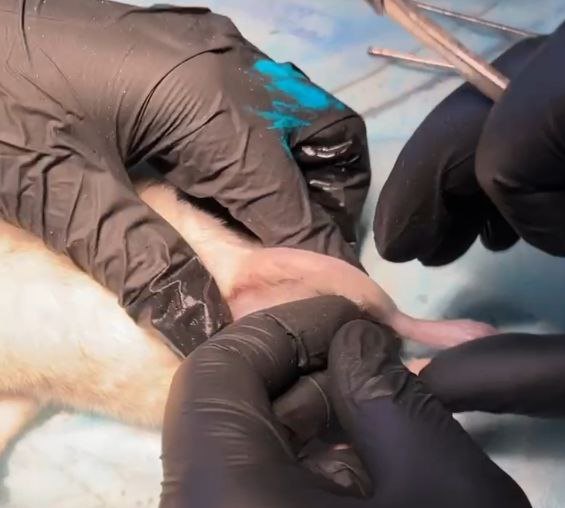In a project supported by the Russian Science Foundation, TSU materials scientists developed a new technology for obtaining composite biocoatings, which are integral to the composition of bones in a human body. The new coatings will reduce the risk of postoperative complications with bone implants, as well as drastically increase the integration speed of the titanium nickelide implants that serve as bone substitutes.
“The biggest problem implant recipients face is inflammation, which can cause the implants to be rejected by the organism,” states the head of the TSU Laboratory of Superelastic Biointerfaces, Ekaterina Marchenko. “We must tackle two challenges to avoid complications as much as possible: We have to protect the implant itself from corrosion and make sure it is compatible with the recipient's native tissues.”

TSU scientists were able to overcome the first challenge in the last project, also financed by the Russian Science Foundation. They sprayed the three-layer Ti-Ni-Ti coating followed by synthesis to protect implants from biological fluids and intense pressure. These implants were used in laboratory mice for fractured femur repair. The implant process was carried out at Ural State Medical University, and the earliest postoperative stages have already suggested that the replacement was a success.
 The second challenge is currently being worked on by TSU jointly with Institute of High Current Electronics of the Siberian Branch of Russian Academy of Sciences. A research team is developing the technology for coating TiNi implants with hydroxyapatite and calcium phosphate by means of plasma-assisted high-frequency spray. Scientists found the proper coating techniques to create a dense, defect-free structure and a textured surface, with the latter being crucial for better osteointegration.
The second challenge is currently being worked on by TSU jointly with Institute of High Current Electronics of the Siberian Branch of Russian Academy of Sciences. A research team is developing the technology for coating TiNi implants with hydroxyapatite and calcium phosphate by means of plasma-assisted high-frequency spray. Scientists found the proper coating techniques to create a dense, defect-free structure and a textured surface, with the latter being crucial for better osteointegration.
“Preliminary studies show that the new coating has high biocompatibility: It offers sufficient adhesion characteristics and fast division of osteogenic, bone-forming cells,” explains Ekaterina Marchenko. “During our first experiments it became clear that the bioactive coating enables faster bone-implant healing, making the adaptation period twice as fast: 24 to 14 days instead of 48 to 24.”
Scientists intend to continue refining the coating technology and study the structure and properties of various types of coating to achieve manufacturing parameters for best performance.
Results of the project “Reactive Synthesis of TiNi-supported TixNiy (N, C) Intermetallic Coatings via Use of Magnetron Three-Layered Ti-Ni-Ti Spray” (identification code No. 19-72-10105) will be presented in 2024.
For reference:
TSU Laboratory of Superelastic Biointerfaceswas established with the support of the government of the Russian Federation for solving complex research problems in the field of medical materials science. It primarily focuses on fundamental and applied research to develop advanced biocompatible materials for replacing soft and hard tissue defects from injuries, acquired diseases, or congenital pathologies.